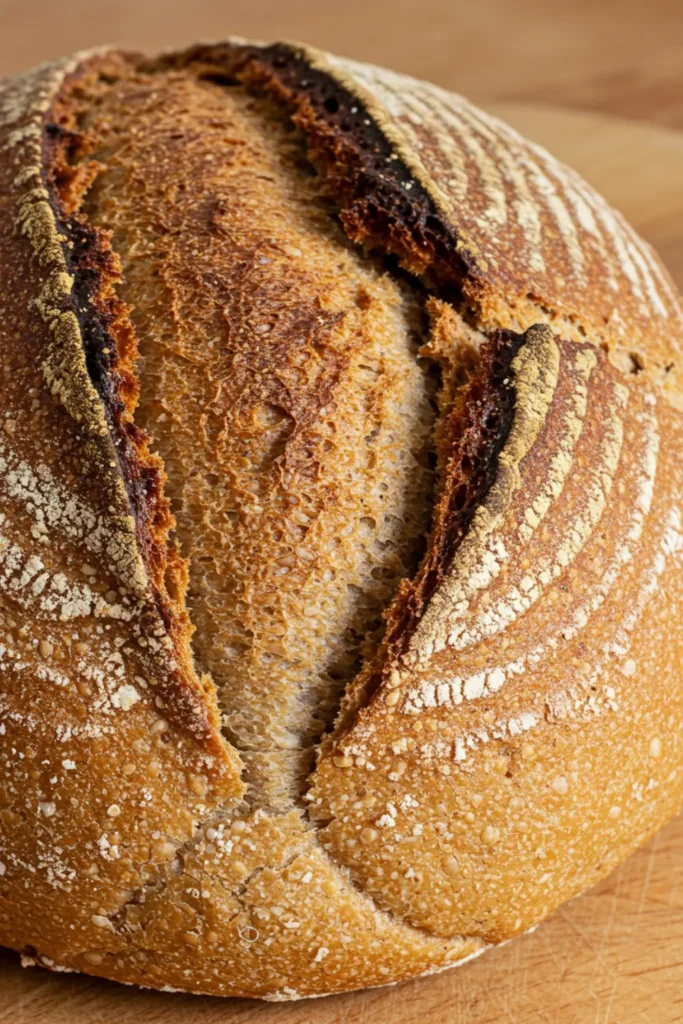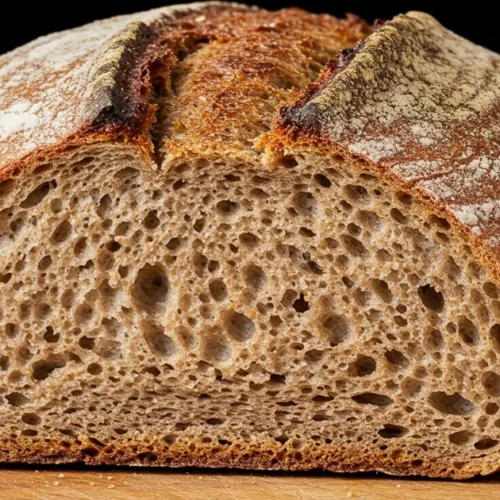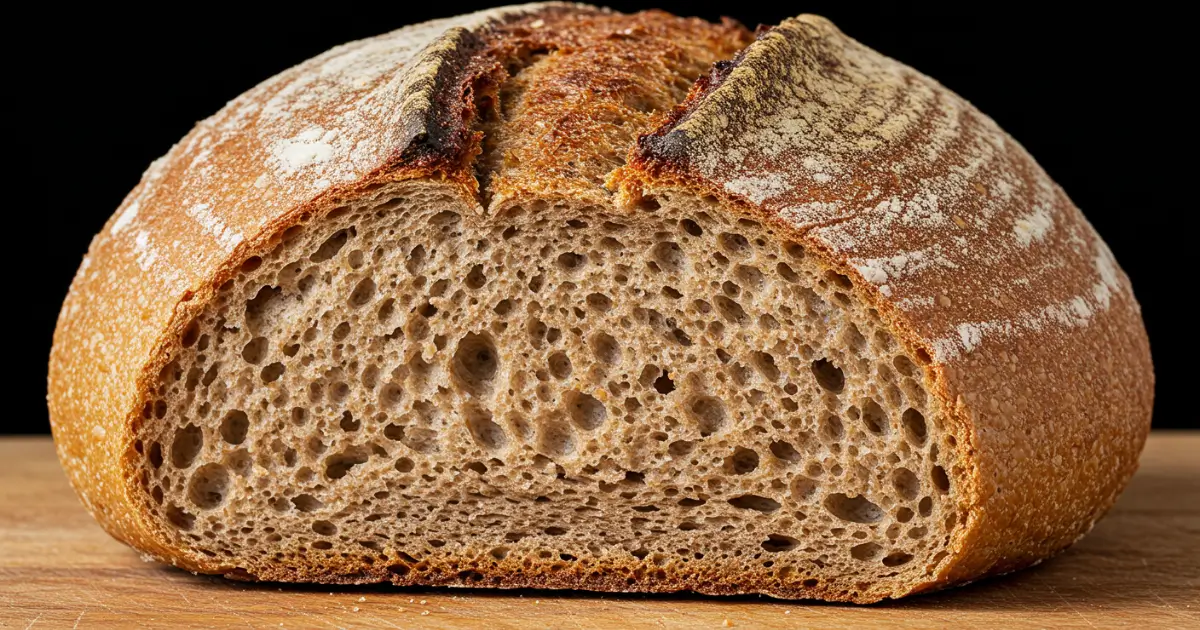Whole wheat bread is more than just a food choice—it’s an essential part of a healthier lifestyle. There’s something unique about the nutty flavor and hearty texture of fresh whole wheat bread that makes it stand out. Not only does it add great taste to your meals, but it also provides important nutrients for your body.
Why We Love Whole Wheat Bread
Whole wheat bread has gained popularity in recent years, and for good reason. Unlike its white counterpart, it offers a wealth of benefits that not only enhance your diet but also your overall health. Here’s why we love this bread:
- Packed with Nutrients: Whole wheat bread is rich in fiber, vitamins, and minerals, particularly B vitamins, iron, magnesium, and zinc. These nutrients are essential for your energy levels and overall health.
- Supports Digestion: The fiber in whole wheat bread plays a vital role in digestion. It helps regulate your digestive system, making sure things move smoothly.
- Sustained Energy: The complex carbohydrates in whole wheat bread digest more slowly than refined white bread, providing you with long-lasting energy throughout the day.
- Lower Glycemic Index: Whole wheat bread has a lower glycemic index than white bread, meaning it won’t cause rapid spikes and crashes in blood sugar. This makes it a better choice for people managing blood sugar levels.
- Delicious Flavor: Beyond its health benefits, whole wheat bread has a rich, nutty flavor that adds depth to any meal. Whether toasted, turned into a sandwich, or paired with soup, whole wheat bread offers a satisfying taste.

Ingredients
Whole Wheat Flour – This is the main ingredient that gives the bread its hearty texture and nutrients.
Active Dry Yeast – It helps the bread rise and gives it a light texture.
Olive Oil – Adds moisture and a bit of flavor to the bread.
Honey – A natural sweetener that helps activate the yeast and adds a touch of sweetness.
Ground Flaxseed or Chia Seeds (optional) – Adds extra fiber and nutrients, but it’s not necessary for the recipe.
How to Make
Making whole wheat bread from scratch is easier than it sounds, and the end result is more than worth it. Follow these simple steps to make your own homemade loaf of whole wheat bread:
- Activate the Yeast: Begin by mixing the warm water and honey in a bowl. Sprinkle the yeast over the top and let it sit for about 5 minutes. You should see it start to foam up, which means the yeast is activated and ready to go.
- Combine the Dry Ingredients: In a large bowl, mix the whole wheat flour and salt together. Stir to combine and create a dry mixture.
- Add the Wet Ingredients: Pour the activated yeast mixture and olive oil into the dry ingredients. Stir with a wooden spoon until the dough starts to come together. You may need to add a little more water or flour to achieve the right consistency, but the dough should be slightly sticky.
- Knead the Dough: Turn the dough onto a floured surface and begin kneading. Knead for about 10 minutes, until the dough becomes smooth and elastic. This step is important to develop the gluten in the flour, which gives your bread its structure.
- First Rise: Place the dough into a lightly greased bowl and cover it with a damp cloth or plastic wrap. Let it rise in a warm place for about an hour, or until it doubles in size.
- Shape the Dough: Once the dough has risen, punch it down to release the air. Shape the dough into a loaf and place it into a greased loaf pan. Cover it again and let it rise for another 30-45 minutes.
- Preheat the Oven: While the dough is rising, preheat your oven to 350°F (175°C).
- Bake the Bread: Place the loaf in the oven and bake for about 30-35 minutes, or until the top is golden brown and the bread sounds hollow when tapped. You can also use a thermometer—when it reaches 190°F (88°C) internally, it’s done.
- Cool and Slice: Allow the bread to cool for at least 30 minutes before slicing. This helps the texture set, ensuring you get perfect slices every time.
Expert Tips
To ensure your whole wheat bread turns out perfectly every time, here are a few expert tips:
Measure Flour Correctly: Too much flour can result in a dense loaf. Always spoon the flour into your measuring cup and level it off to avoid packing it in.
Don’t Skip the Kneading: Kneading is essential to develop the gluten and create the right texture. Spend at least 10 minutes on this step for the best results.
Use Warm Water: Yeast is sensitive to temperature, so make sure the water is warm—not hot. If the water’s too hot, it will kill the yeast.
Let the Dough Rise in a Warm Place: Yeast thrives in warmth, so try to let the dough rise in a cozy spot in your kitchen. If it’s cold in your home, consider preheating your oven for a few minutes, then turning it off and letting the dough rise in the residual heat.
Test for Doneness: When baking, tap the bottom of the loaf. If it sounds hollow, it’s done. If not, give it a few more minutes.
Variations
While whole wheat bread is delicious on its own, there are many ways to switch things up with variations that suit your taste:
Cinnamon Raisin Whole Wheat Bread: Add cinnamon and raisins to the dough for a sweet twist on traditional whole wheat bread. Perfect for breakfast or a mid-afternoon snack.
Multigrain Whole Wheat Bread: For a more textured loaf, add sunflower seeds, oats, or even quinoa to the dough. These ingredients add extra fiber and a satisfying crunch.
Whole Wheat and Honey Bread: For a slightly sweeter version, increase the amount of honey in the dough. This version is perfect for those who want a hint of sweetness without being overwhelming.
Serving
Whole wheat bread is incredibly versatile, and there are countless ways to serve it:
Avocado Toast: Top a slice of whole wheat bread with mashed avocado, a sprinkle of salt, and some red pepper flakes for a quick, healthy snack.
Sandwiches: Whole wheat bread is perfect for making hearty sandwiches. Whether you prefer a classic turkey sandwich or a veggie-loaded option, whole wheat bread adds flavor and nutrition.
Pair with Soup: Whole wheat bread makes a great side for soups. Dip it in your favorite creamy soup for a wholesome meal.
With Cheese: Enjoy whole wheat bread with your favorite cheese for a simple, satisfying snack.
FAQs
What are the benefits of whole wheat bread over white bread?
Whole wheat bread is richer in fiber, vitamins, and minerals, and it provides a slower, more sustained energy release compared to white bread.
Can I make whole wheat bread without yeast?
Yes, you can make whole wheat bread without yeast by using baking powder or baking soda as a leavening agent. However, the texture will be different from traditional yeast bread.
How long does whole wheat bread stay fresh?
Whole wheat bread stays fresh for about 3-4 days at room temperature. If you want to store it longer, freeze it.

whole wheat bread
Send me this recipe!
Just enter your email below and get it sent straight to your inbox!


